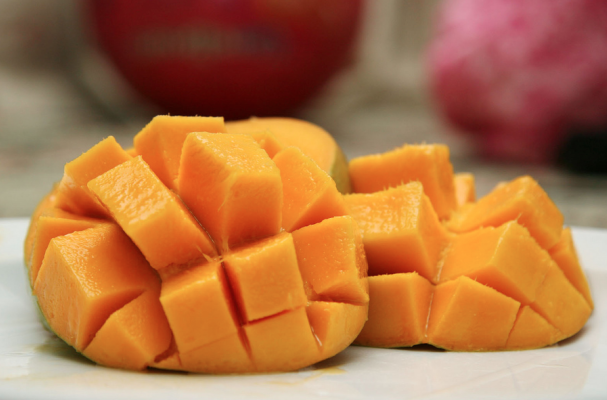
Mangoes, the oblong tropical fruit, have grown in popularity in the last two decades. If you were like me, selecting a ripe mango is often hit or miss. The story was always the same. I would spot a beautiful display of red and yellow hued mangoes at the market and my mouth watered at the thought of tasting the sweet fruit. I bought a box, excited for the simple treat that awaited me when I got home. However, when a stood in front of the cutting board I was usually sorely disappointed with the results. Most of the time the mango would be underripe and on occasion, the fruit would be overripe to the point of almost being spoiled.
This was often the case until I was smart enough to do some research and teach myself how to select a ripe mango. The truth of the matter is that very few mangoes arrive at the market ready to be eaten but there are some tips to keep in mind that will allow you to eat a mango sooner rather than later. When you are at the grocery store, look for mangoes that are more red and yellow in color as opposed to green. While color is not a fast and sure indicator of ripeness, it's a helpful tool to keep in mind. You'll want to select a mango that is soft but doesn't appear to have any bruising, this is a sign of overripeness. Like with pineapple, give your mango a sniff. If there is a fruity aroma, you're on the right track.
There is nothing wrong with purchasing slightly underripe mangoes. Just leave them out on the kitchen counter at room temperature for a couple of days. Or to speed up the ripening process, place them in a paper bag. Once your mango is ready to eat, cut it up into slices or beautiful uniform cubes. The video below shows you how.
Image Sources:










